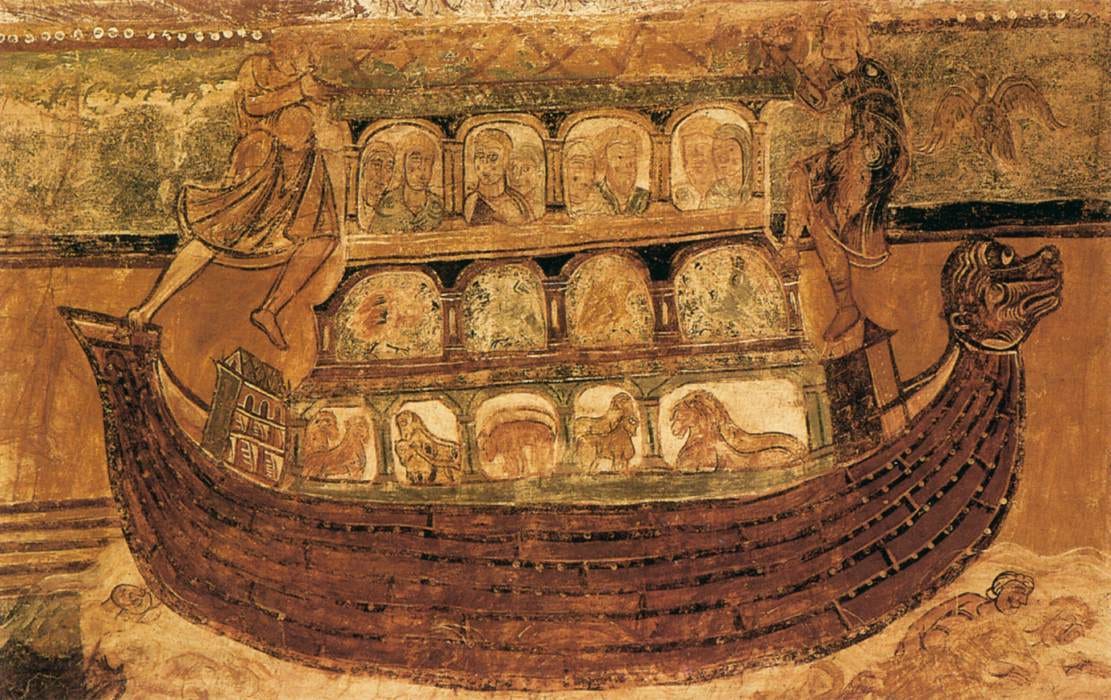The Mythic Pattern
You already know this story.
A man hears a divine voice.
He’s told the world is corrupt and beyond saving.
He’s given instructions to build a massive boat.
To bring animals.
To prepare for a flood.
He builds it.
He waits.
He releases birds to find dry land.
He survives.
The world begins again.
You’re probably thinking: “Yeah, yeah… Noah. I know this one.”
But here’s the twist:
This story was told at least a thousand years before the story of Noah.
And it’s not from the Bible.
It’s from The Epic of Gilgamesh—an ancient Mesopotamian myth passed down long before the Israelites ever entered the scene.
Same structure. Same journey. Different name. Different culture.
And it’s not the only one.
Flood myths show up in cultures all over the world—India’s Manu, Greece’s Deucalion, China’s Gun-Yu flood, even in Mayan, Incan, and Aboriginal Australian traditions.
Different names. Same storm.
Different faces. Same myth.
Joseph Campbell spent his life studying myths from every culture he could get his hands on—Hindu epics, Sumerian poetry, African folk tales, Indigenous oral traditions, Christian scriptures, Buddhist parables, Norse sagas, modern films—and he discovered something unexpected:
They were all telling the same basic story.
He called it the monomyth, but you probably know it as the Hero’s Journey—because it’s a map of how humans transform.
The hero isn’t some distant figure of greatness.
The hero is you.
Normal, boring, nobody-you.
You leave as yourself…and return as the version that’s wiser, stronger, braver—finally aware of who you really are.
The Myth of Myths
Let’s clear something up.
Today, when people say something is “a myth,” they usually mean it’s false.
A rumor. A lie. A thing to debunk.
But the original meaning is the opposite.
A myth isn’t something that didn’t happen.
It’s something that happens all the time.
It’s a story so deeply true, so universally human, that it helps us make sense of life itself.
It may not be factually accurate, but it’s emotionally and spiritually undeniable.
Myth is how we give chaos a shape.
It’s how we name the unnameable and walk through what we can’t explain.
What Is the Monomyth?
In simplest terms:
A person lives in the known world.
Something disrupts it.
They resist the change.
But eventually, they leave.
They suffer.
They grow.
They return—transformed—and bring something valuable back with them.
That’s it.
You’ve seen it in Star Wars.
You’ve read it in Harry Potter.
You’ve lived it—if you’ve ever walked away from something safe in search of something real.
Monomyth just means “one story.”
It’s the story we all live—again and again.
It’s Never Just One Journey
Let’s name this up front:
You don’t just go on one Hero’s Journey in your life.
You go on many.
Some last a decade.
Some last a week.
Some change everything.
Some just change you.
They can overlap.
You might be ending one story while beginning another.
So don’t wait for the “epic” moment.
If something’s shifting, you’re already on the path.
You’re Already In It
You are somewhere on the Hero’s Journey right now.
Maybe you’re still in the Ordinary World—wondering why things feel flat, boring, too safe.
Maybe the Call to Adventure has already come—but you’ve been ignoring it.
Maybe you’ve crossed the threshold into something unfamiliar recently.
Maybe you're in the pit—what Campbell called the Belly of the Whale.
Or maybe you’ve found your way through the dark… and now you're trying to figure out how to share your treasure—what you’ve learned.
Where Are You Right Now?
Ask yourself:
What part of your life feels too small or too safe?
Is there a whisper you’ve been ignoring?
Have you already left something behind—and now you’re wandering?
Or are you holding a hard-earned truth you’re not sure how to share?
You don’t have to fix anything yet.
But naming your place in the story?
That’s how the next chapter begins.
So What Now?
Over the next four posts, we’ll walk through the full Hero’s Journey together.
Not as a formula.
But as a flashlight.
To help you see where you are—and what might come next.
Because this isn’t just a story pattern.
It’s yours.
The Hero’s Journey isn’t for classic “heroes.”
It’s for anyone brave enough to listen to the whisper and take the next honest step.
Up Next: Leaving Sleepy Land
Tomorrow, we’ll talk about what it means to step away from the known world—even when it’s comfortable, even when it’s all you’ve ever known.
Why most of us resist the call to change.
Why we try to bargain with it.
And why real growth starts when you finally say: I can’t stay here anymore.
“The hero’s journey always begins with the call. One way or another, a guide must come to say, ‘Look, you’re in Sleepy Land. Wake. Come on a trip. There’s a whole aspect of your consciousness, your being, that’s not been touched. So you’re at home here? Well, there’s not enough of you there.’”
—Joseph Campbell, The Power of Myth





Yes, most people in our culture equate myth with a fairytale, and since fairytales aren’t true, myth then becomes something to be poo-pooed as irrelevant, at best, or as you said, deemed false and of no value.
Just curious: was “the flood came” an oversight between “He waits,” and
“He releases birds to find dry land?” Or was there purpose?